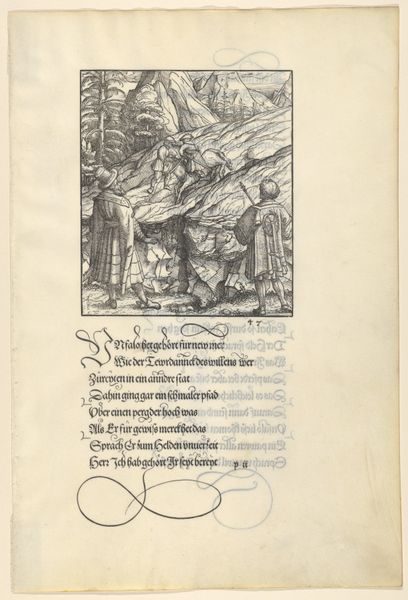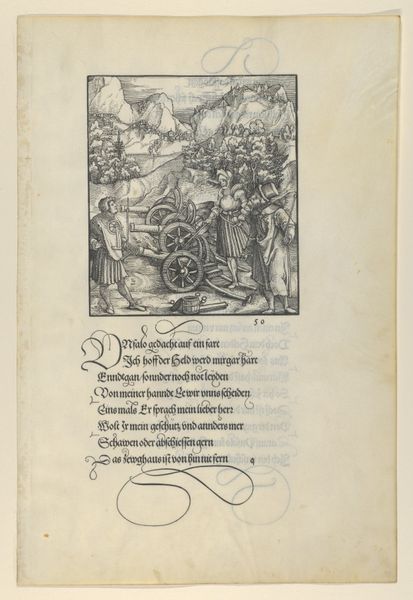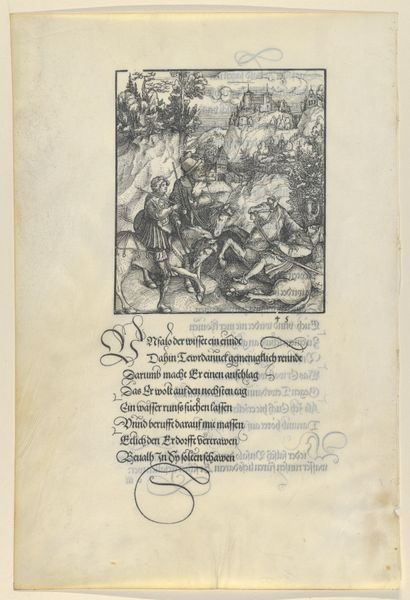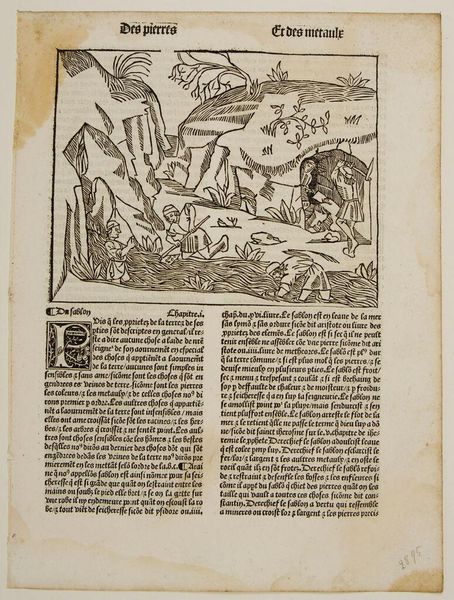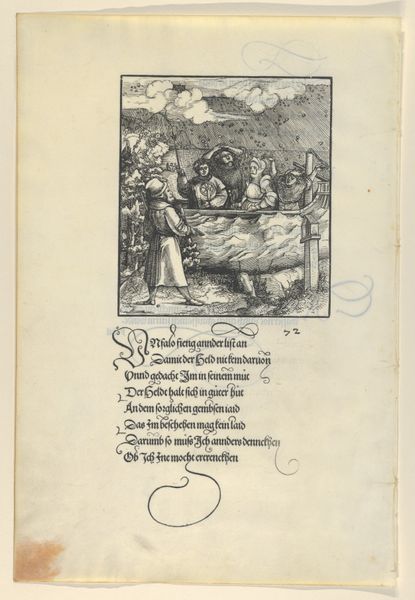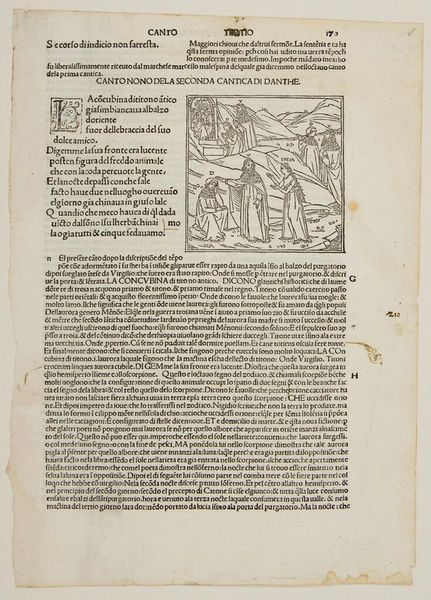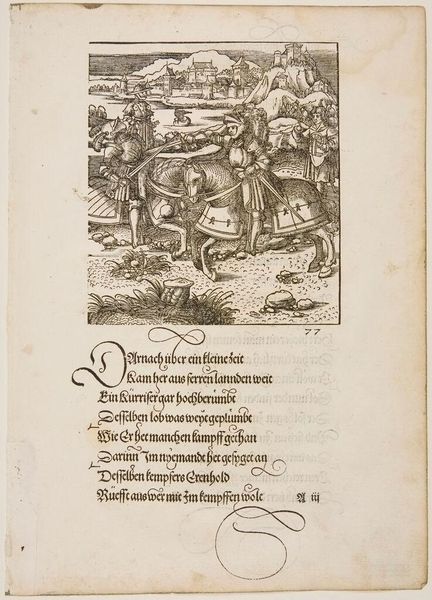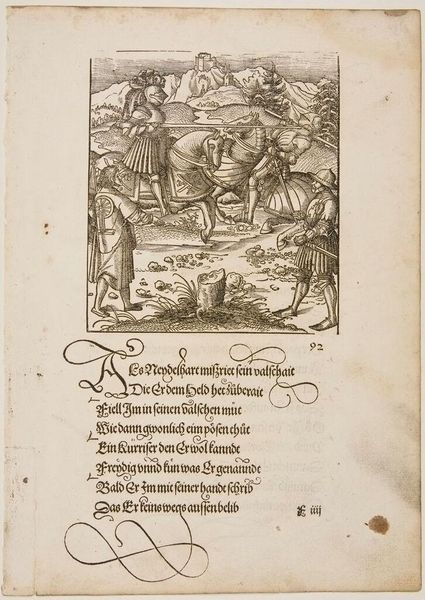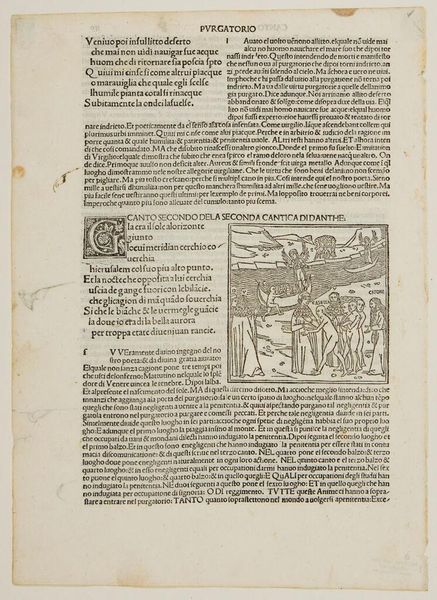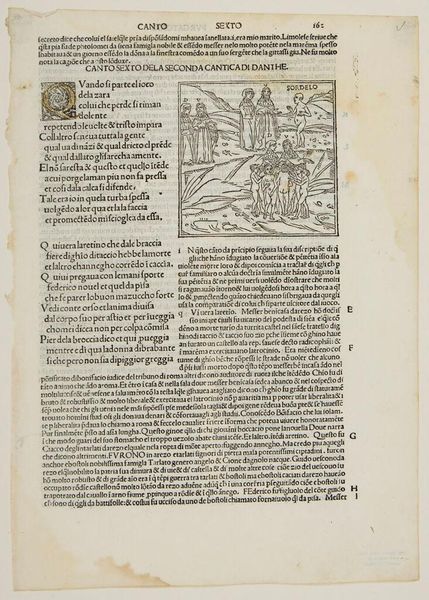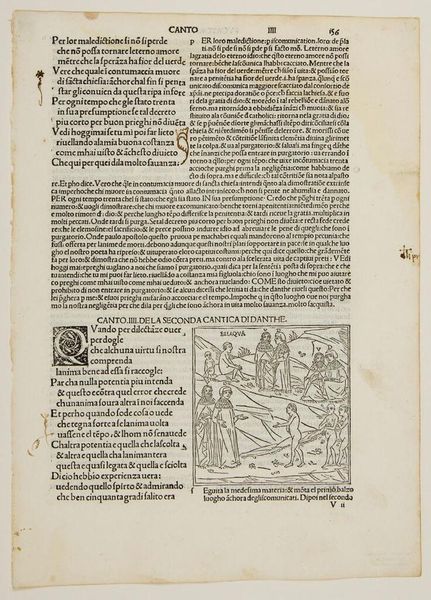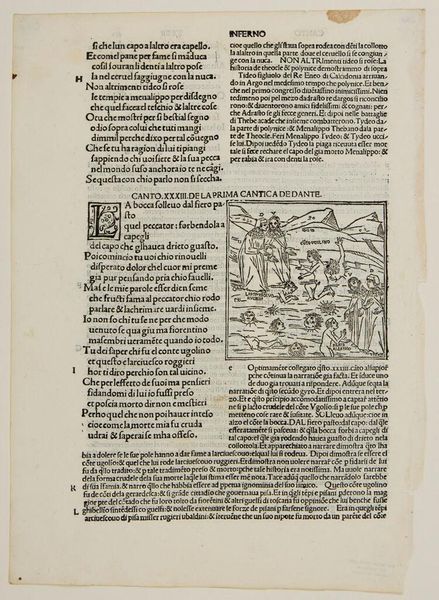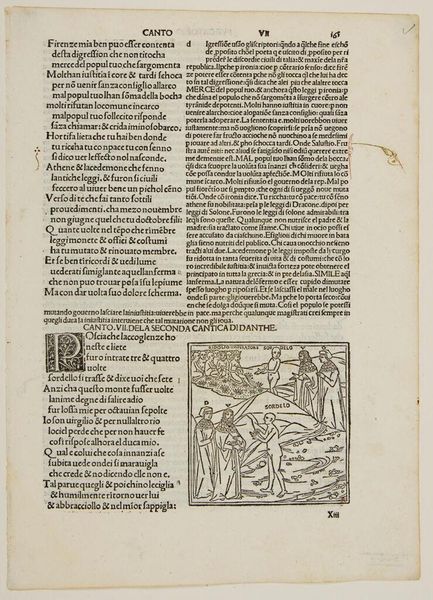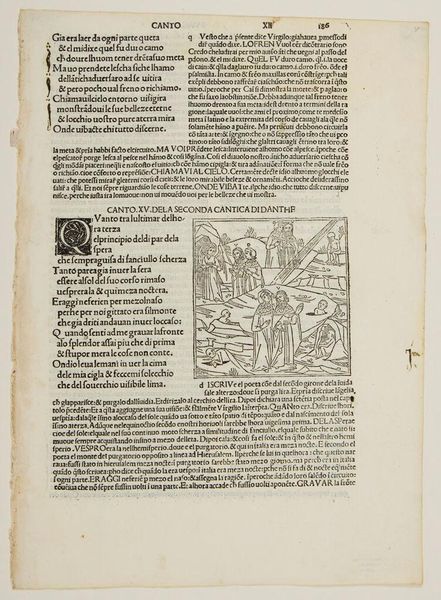
Theuerdanck's Ship Caught in the Ice, from Theuerdanck 1517
0:00
0:00
Dimensions: Sheet: 14 11/16 × 9 9/16 in. (37.3 × 24.3 cm)
Copyright: Public Domain
Editor: Here we have Hans Schäufelein's woodcut, "Theuerdanck's Ship Caught in the Ice," created in 1517. The stark black lines on the page give it quite a dramatic, almost unsettling feel. What structural elements stand out to you in this print? Curator: Primarily, the sharp contrast between the black lines and the white paper generates a striking visual rhythm. Consider how the artist has deployed line to suggest depth and texture – the density of lines in the water compared to the sparser treatment of the distant landscape, for instance. This manipulation of line creates a distinct formal structure. Editor: So it's about how the lines are used, not necessarily what they represent? Curator: Precisely. Though we can read narrative elements, a formalist approach foregrounds how those elements are constructed visually. Note the interplay of horizontal and vertical lines; the dynamism created by the diagonals suggesting the ship's precarious situation versus the stoic figure at right. Does the relationship between these elements impact the narrative, and, if so, how? Editor: It's true that the diagonal of the ship and the vertical figure kind of pull your eye in different directions. The text below is almost like an anchor at the bottom, giving it stability. Is that part of the composition too, even though it's text? Curator: Certainly. The presence and positioning of the text create a dialogic relationship with the image, contributing to the work's overall structural integrity. Even without understanding its literal content, we can observe how its texture and shape function within the broader composition. Editor: This close look reveals how the visual language itself communicates so powerfully! I appreciate how focusing on these components lets us interpret art, even if we're not sure what's depicted in the print. Curator: Precisely. Form dictates function, not just figuratively but literally in determining the viewer’s encounter with the image. The visual and physical properties of art become expressive ends in themselves.
Comments
No comments
Be the first to comment and join the conversation on the ultimate creative platform.
